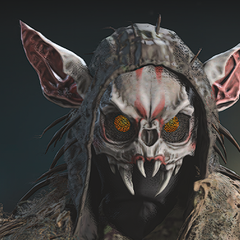How do passive PSU's work?
Man, you sure ask a lot of so basic questions that any curious person would find answers for with some Google searches.
A power supply converts a higher voltage to lower voltages used by computers. This conversion, like anything in this world, is not done perfectly. There are some losses which manifest as heat.
Integrated chips, components, can handle some heat but only up to some point. Some chips can be up to 85 degrees Celsius, some more basic but important components for power supplies (mosfets, diodes) may function properly at up to 125.150 degrees Celsius .. but of course, it's never a good idea to let these components reach such high temperatures. For example, one 125c rated component may be seen by an engineer as one that can only go as high as 105c.
In order to keep those hot components cool, heatsinks are used. The heatsinks take the heat from the tiny chip surfaces, spread it all over the surface of the metal in the heatsink and then this heat slowly transfers in the air that's around the metal. A heatsink can only "suck" and push in the air so much heat until it reaches its limits. By moving a lot of air over the surface of the heatsink (which happens when you install a fan in the power supply), the heatsink can move a lot of heat into the air much faster, so it manages to keep the small chips touching it much cooler.
As engineers design more efficient power supply designs and more efficient chips, there's less waste produce as heat, so in general the chips and components don't heat as much.
In the case of semi-passive power supplies, engineers know that up to a particular power output (let's say 200w of 650w), the performance of the heatsink chosen for a part is good enough to keep that chip or component lower than the maximum temperature allowed (for example 100c for 125c parts). When the power output goes over that value, they know they'll have to help the heatsink with some extra air from the fan, to maintain the temperatures below that threshold, so that's when the power supply turns the fan on and from that point, the rotation speed is often adjusted based on how hot some of the most hot components are in the power supply (there's usually one or two temperature sensors in strategic places).
Completely passive power supplies are very very efficient (gold or higher) so they produce from the start very little heat, and they also employ smart designs like placing some on the hotter chips on the bottom of the circuit board, touching the metal case of the power supply. This way, the whole case of the power supply acts as a heatsink for those components and the case of your computer itself spreads some of the heat (because you screw the power supply to the case and there's metal to metal contact). The other heatsinks inside the power supply are much bigger and more capable (but usually also much more expensive), to make sure the components will stay within allowed temperatures over the whole output power of the power supply.
The huge surface of the power supply case acting as heatsink and the normal air movement inside the power supply is enough to keep all components in a fully passive power supply within reasonable temperatures. (natural convection, warm air rises so cold air comes from the bottom of your case through the power supply and naturally raises to the top of your case)
I mean like I thought that a PSU without a fan can explode or something.
When a chip or component gets too hot, parts of its insides can melt together so there can be short circuits inside. That makes the component blow up or just crack in separate parts and make smoke. In the worst case scenario, the fuse in your electricity panel can be triggered to protect your mains wiring and the power supply is dead.
if you keep these components within allowed temperatures, passive or not, the power supply will work fine.

.jpg.d6a3442bcabf3c44f50dcb9e3edba9e2.thumb.jpg.39a0b81c8b167372d64a5a8fabf4ab26.jpg)















Create an account or sign in to comment
You need to be a member in order to leave a comment
Create an account
Sign up for a new account in our community. It's easy!
Register a new accountSign in
Already have an account? Sign in here.
Sign In Now